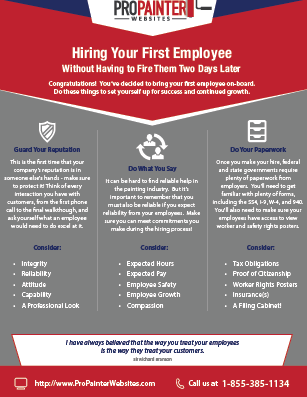Understanding Seasonal Influences On Commercial Exterior Painting: Important Expertise For Success
Understanding Seasonal Influences On Commercial Exterior Painting: Important Expertise For Success
Blog Article
best paint for commercial kitchen walls Created By-Aguilar Bagger
When you're intending a commercial exterior paint job, seasonal variables can make or break your outcomes. You'll want to take into consideration exactly how temperature and moisture effect paint application and drying times. Picking the ideal period can ensure your paint sticks properly and lasts longer. But which periods are really the very best for this sort of work? Let's check out the crucial elements that can affect your task's success.
The Impact of Temperature on Paint Application
When you're intending a business outside painting task, the temperature can dramatically influence just how well the paint sticks and dries.
Ideally, you want to repaint when temperature levels vary between 50 ° F and 85 ° F. If it's too chilly, the paint may not cure correctly, bring about concerns like peeling off or cracking.
On https://news.artnet.com/market/keith-haring-radiant-baby-childhood-home-auction-2163953 , if it's as well warm, the paint can dry too quickly, protecting against correct adhesion and resulting in an irregular surface.
You should additionally think about the moment of day; morning or late afternoon supplies cooler temperatures, which can be a lot more desirable.
Constantly examine the maker's suggestions for the specific paint you're utilizing, as they typically provide assistance on the suitable temperature level range for ideal results.
Humidity and Its Impact on Drying Times
Temperature isn't the only environmental variable that influences your business outside painting job; moisture plays a significant role also. High humidity levels can decrease drying out times considerably, affecting the total quality of your paint task.
When the air is saturated with dampness, the paint takes longer to heal, which can cause issues like poor adhesion and a higher risk of mold growth. If you're repainting on a specifically humid day, be prepared for extensive wait times between layers.
It's important to check local weather and plan appropriately. Preferably, go for moisture degrees between 40% and 70% for optimal drying out.
Maintaining these consider mind guarantees your task stays on track and supplies a long lasting coating.
Best Seasons for Commercial Exterior Painting Projects
What's the most effective time of year for your business outside paint jobs?
Springtime and early fall are normally your best options. During these periods, temperatures are mild, and humidity levels are typically lower, developing suitable conditions for paint application and drying out.
Prevent summer's intense heat, which can create paint to completely dry also promptly, resulting in inadequate adhesion and surface. In a similar way, wintertime's chilly temperatures can impede appropriate drying out and curing, running the risk of the long life of your paint task.
Go for days with temperatures in between 50 ° F and 85 ° F for optimal outcomes. Remember to examine the regional weather report for rain, as damp problems can spoil your project.
Preparation around these aspects ensures your painting job runs efficiently and lasts longer.
Conclusion
In conclusion, planning your commercial exterior painting projects around seasonal considerations can make a considerable difference in the end result. By scheduling job during the ideal temperature levels and humidity degrees, you'll ensure better bond and drying out times. Keep in mind to watch on regional weather report and choose the correct time of year-- springtime and very early autumn are your best choices. Taking these steps will help you achieve a durable and professional finish that lasts.
